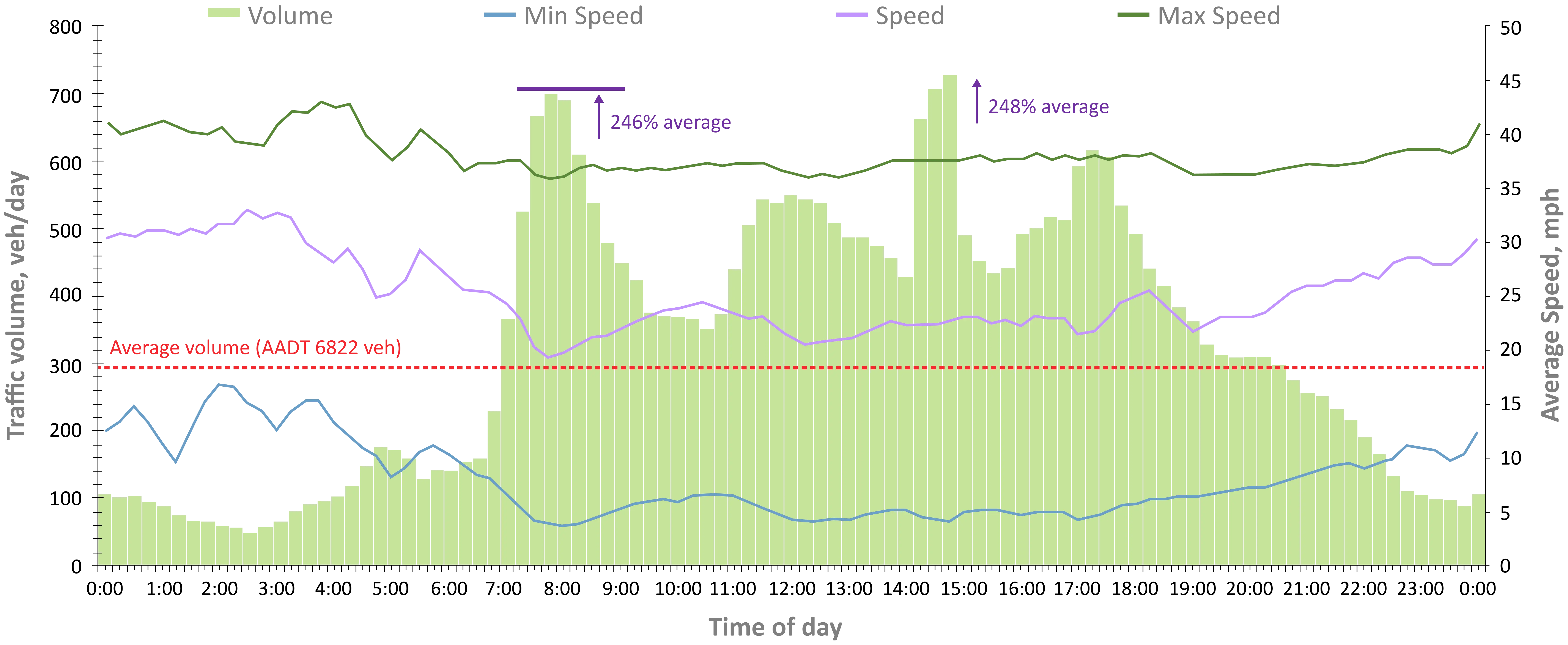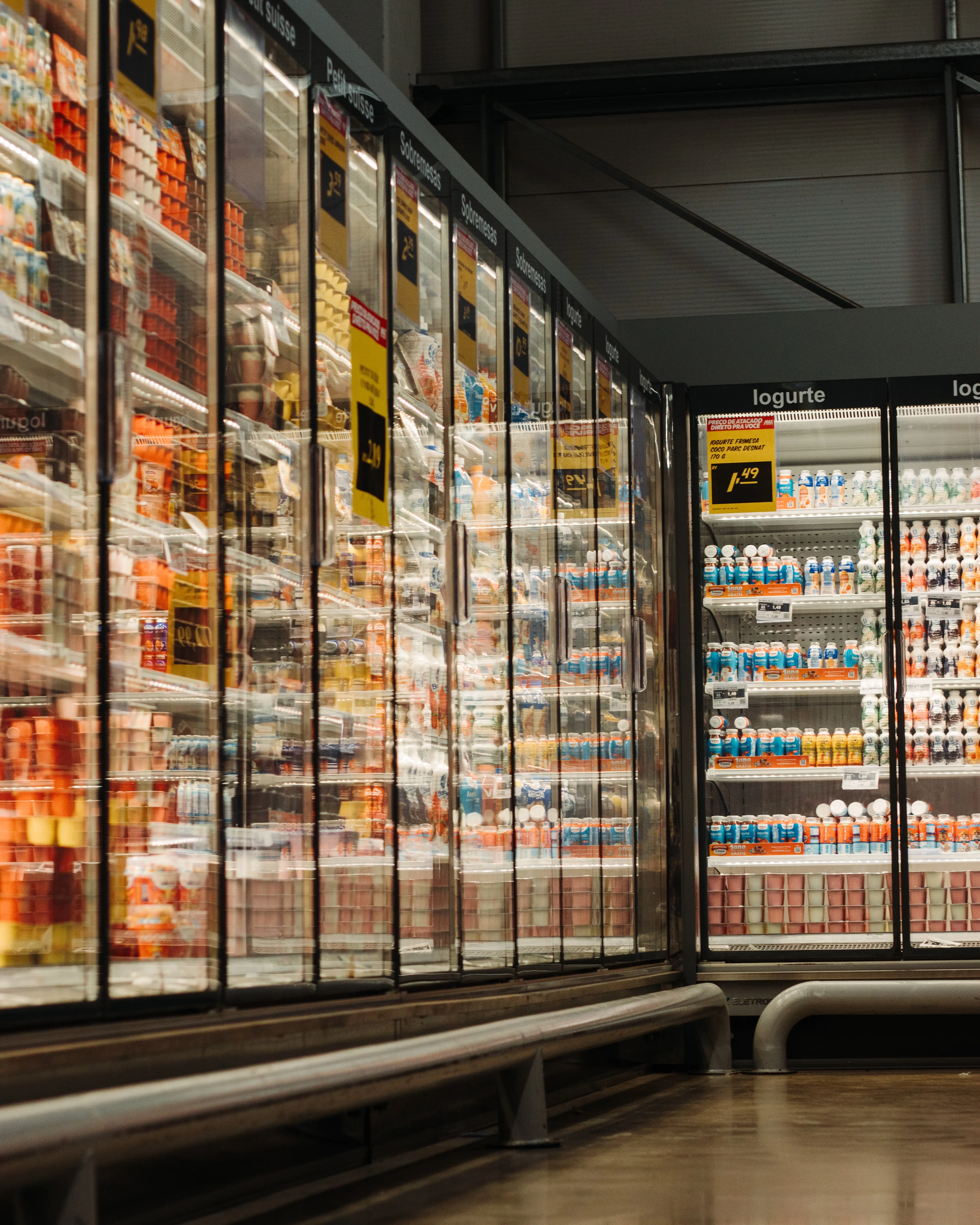Leveraging Traffic Data for Optimizing Daily Operations of Convenience Stores

Try TrafficZoom’s AADT metrics today with a free trial
Get instant access nowIntroduction
In the era of data-driven decision-making, businesses across industries are harnessing the power of information to enhance their operations and customer experiences.
Convenience stores, being an integral part of our daily lives, can greatly benefit from leveraging the traffic data reports to optimize their daily operations. By utilizing this valuable data, c-store managers can efficiently track store visits, plan personnel allocation, optimize stock planning, and enhance their supply chain management.
Understanding Traffic Data
Traditionally, traffic data referred to the information collected through detectors, cameras, or portable traffic counters that monitor the movement of vehicles on roads and highways.
Lately though, it became possible to gather the traffic flow data through electronic means, using the data streams from GPS, mobile phones, connected vehicles, etc.
This type of data covers much larger territories than hardware-based data, thus enabling precise, focused traffic information to be provided for any specific location, with 100% temporal coverage. The only problem with mobile data is the relatively small share (3 to 25%) of the traffic participants that transmit it, and this share always fluctuates. As a result, the mobile data providers, instead of true traffic volume, provide biased estimates.
Although, after being filtered, structured, normalized, consolidated with the other types of information and processed via Ticon’s proprietary algorithm, hardware-free data can provide valuable and accurate insights into traffic patterns, congestion levels, and the total number of vehicles passing by specific locations. By tapping into this resource, convenience stores can gain current and historical informationabout the flow of customers in their vicinity.

Estimate Visitor Load
One of the key advantages of utilizing Ticon traffic data is the ability to estimate store visits. By analyzing traffic patterns, c-store managers can identify peak hours when customer footfall is the highest. For this purpose we provide our clients with intraday traffic volumes. As you see from Figure 2, traffic changes during the day may go over 200% above average, which translates into lack of staff in peak hours, waiting lines and lost customers.

Besides significant traffic changes within a day, some locations may have rush days or even weeks. That is why the use of just average daily traffic counts may be very misleading.
Accurate information on daily, weekly and seasonal traffic fluctuations drives educated decisions regarding staffing requirements. Managers can ensure adequate personnel are available through optimal staff schedules during rush hours to handle customer demands efficiently, thus reducing wait times and improving customer satisfaction.
A real case was covered in our recent blog.
Personnel Allocation and Customer Service
Optimizing the allocation of personnel based on traffic data empowers c-store managers to enhance customer service. By understanding the influx of customers at different times, managers can strategically deploy staff members to specific areas within the store. For example, during peak hours, additional personnel can be assigned to checkout counters or customer service desks, ensuring faster service and a better shopping experience. By effectively managing staffing levels, convenience stores can increase productivity and minimize labor costs during slower periods.
Stock Planning and Merchandising

Accurate stock planning is crucial for the smooth operation of any convenience store. Vehicular traffic data offers valuable insights into the demand patterns of customers, allowing managers to optimize their stock planning and merchandising strategies. By analyzing data on visitor load, managers can anticipate the demand for various products during different times of the day or week. This information enables them to stock the right quantities of popular items, minimize out-of-stock situations, and make data-driven decisions when introducing new products or promotions.
Supply Chain Optimization
Efficient supply chain management is vital for the success of convenience stores. By utilizing traffic data supplied by Ticon, c-store managers can collaborate closely with suppliers and distributors to streamline their supply chain processes. Understanding traffic patterns and visitor load helps managers predict demand fluctuations and adjust their ordering schedules accordingly. This leads to optimized inventory management, reduced wastage, and enhanced profitability. New opportunities are added by detailed demographic data that includes age/gender/income distributions attributed to the particular location. In combination with traffic data, this information helps optimally align the store product selection with the preferences of local clientele.
Conclusion
Market research suggests that poor staff scheduling and long wait times during peak hours result in a loss of around 15% of revenue for American retailers each year. While our own estimates are lower, they still indicate significant revenue loss, and leveraging precise, fresh and ample traffic data can not only effectively prevent these losses, but even achieve enhanced customer experiences and improved business performance.














